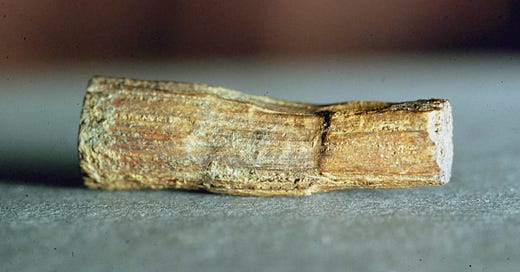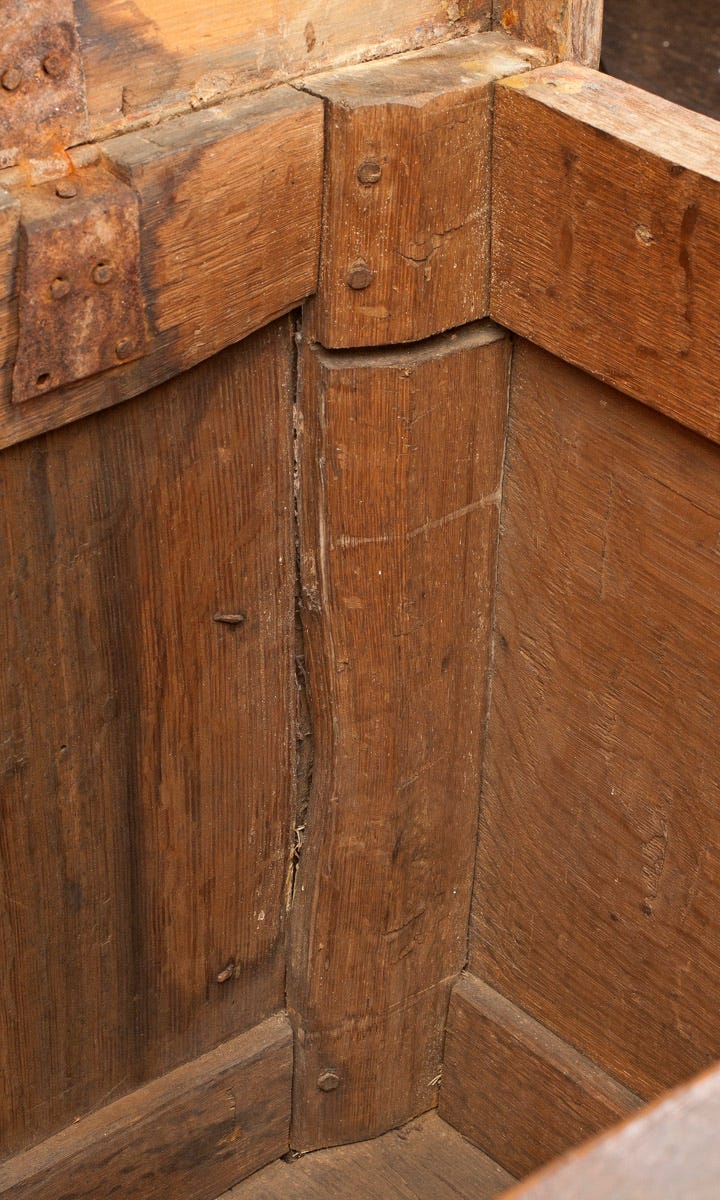With my previous post being about the Braintree chest coming up for sale at Sotheby’s and some recent writing I’ve been doing for my Craft Genealogy project I come to today’s subject: Jennie Alexander’s interest in 17th-century oak furniture, how it started, how it evolved and how it eventually drew me into the mix.
Sometime before the spring of 1980 Charles Hummel, then a curator at Winterthur, showed Alexander the inside of a joined chest from Dedham, Massachusetts. JA flipped out when she realized that the rear stiles had been split apart from one another - a thick chunk of oak busted in half radially to form the two blanks that became the rear stiles. We illustrated this in our joint stool book with Lost Art Press in 2012.
From that point on, JA’s woodworking focus had two areas of study - chair making and joinery. In 1980 she wrote to Benno Forman at Winterthur:
“Dear Benno:
For reasons too simple and complicated to tell I want to make a chest from a tree. I intend to use red oak for stiles, rails, muntins and panels. Cleft red oak. The oak is selected for straight grain. Because of tree size limits I may book match the panels (more of that later.)”
Keep reading with a 7-day free trial
Subscribe to Follansbee's Substack to keep reading this post and get 7 days of free access to the full post archives.





